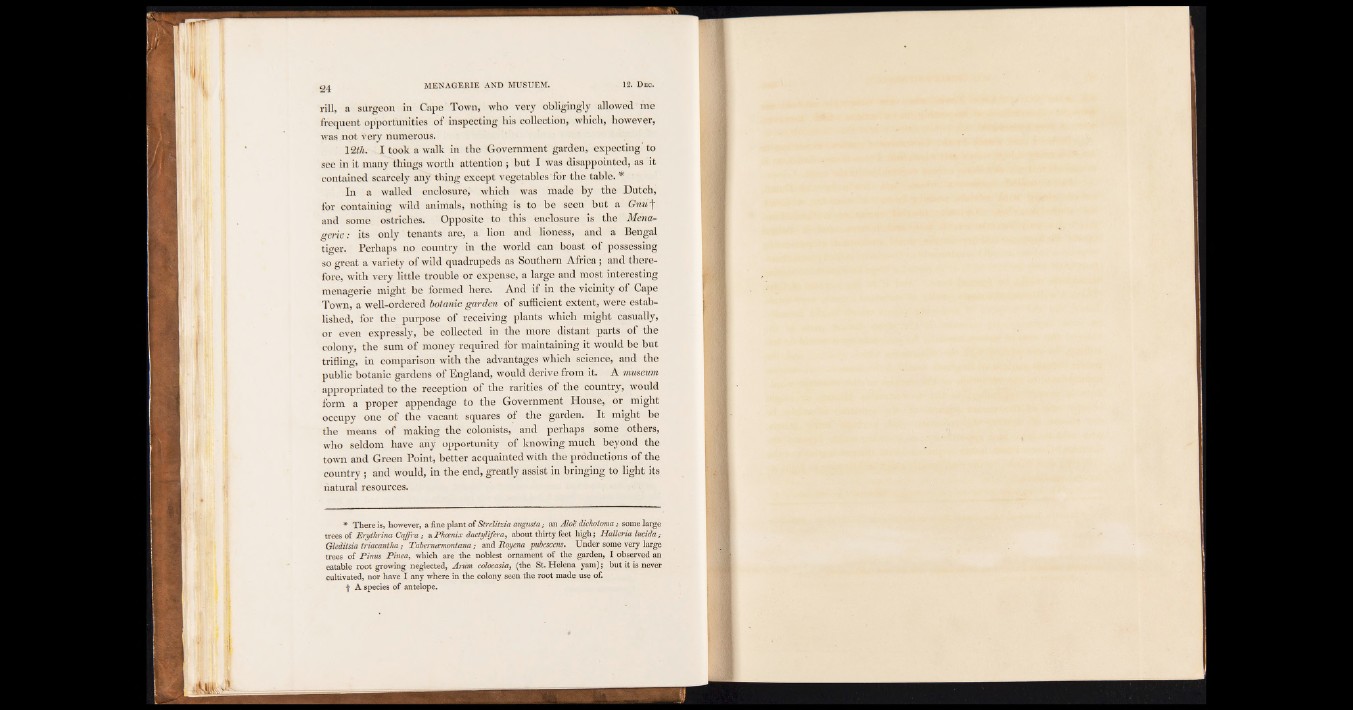
2 4 MENAGERIE AND MUSUEM. 12. Dec.
rill, a surgeon in Cape Town, who very obligingly allowed me
frequent opportunities of inspecting his collection, which, however,
was not very numerous.
12th; I took a walk in the Government garden, expecting to
see in it many things worth attention ; but I was disappointed, as it
contained scarcely any thing except vegetables for the table. *
In a walled enclosure, which was made by the Dutch,
for containing wild animals, nothing is to be seen but a Gnuf
and some ostriches. Opposite to this enclosure is the Menagerie
: its only tenants are, a lion and lioness, and a Bengal
tiger. Perhaps no country in the world can boast of possessing
so great a variety of wild quadrupeds as Southern Africa; and therefore,
with very little trouble or expense, a large and most interesting
menagerie might be formed here. And if in the vicinity of Cape
Town, a well-ordered botanic garden of sufficient extent, were established,
for the purpose of receiving plants which might casually,
or even expressly, be collected in the more distant parts of the
colony, the sum of money required for maintaining it would be but
trifling, in comparison with the advantages which science, and the
public botanic gardens of England, would derive from it. A museum
appropriated to the reception of the rarities of the country, would
form a proper appendage to the Government House, or might
occupy one of the vacant squares of the garden. It might be
the means of making the colonists, and perhaps some others,
who seldom have any opportunity of knowing much beyond the
town and Green Point, better acquainted with the productions of the
country ; and would, in the end, greatly assist in bringing to light its
natural resources.
* There is, however, a fine plant o f Strelitzia augustaj an Aloe dichotoma; some large
trees of Erytkrina Caffra: slP hoenix dactylifera, about thirty feet high; HaUeria Incidas
Gleditsia triacantha: Tabemcemontana; and Boyena pubescens. Under some very large
trees of Pinus Pinea, which are the noblest ornament of the garden, I observed an
eatable root growing neglected, Arum, colocasia, (the St. Helena yam); but it is never
cultivated, nor have I any where in the colony seen the root made use of.
f A species o f antelope.